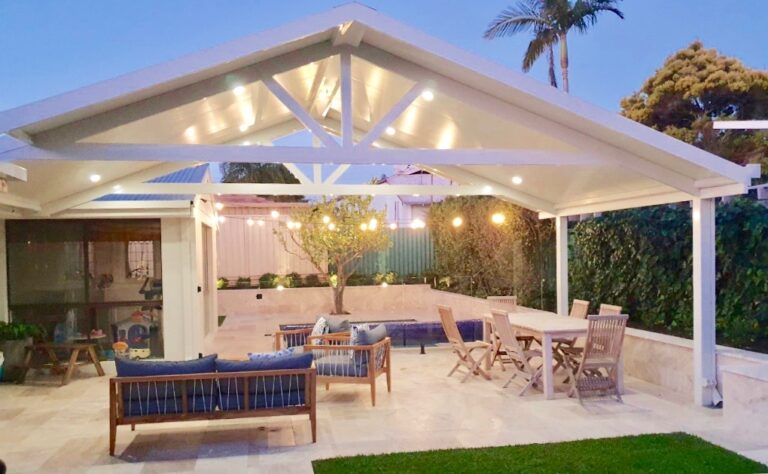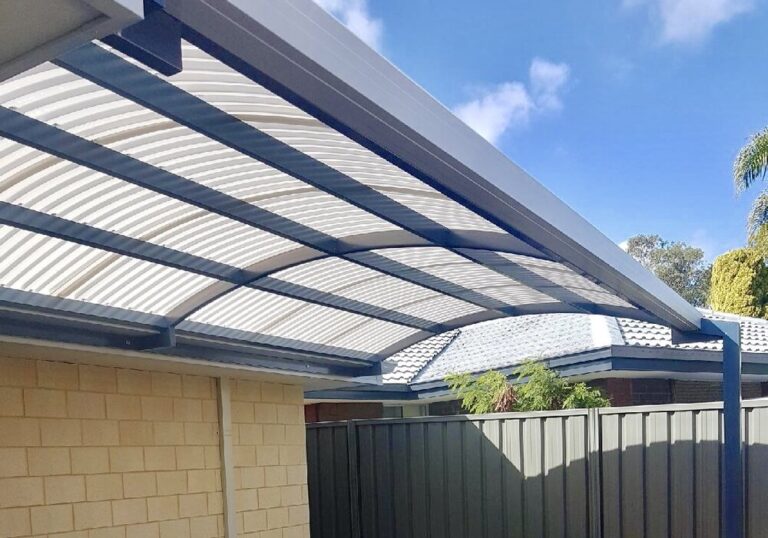In the summer, it is great to have a space to relax and unwind, especially when you are hanging out with family and friends. It is even better when this space is within the comfort of your own home. Some popular ways to do this is with the extension of a patio or pergola. Both options have some similarities. However, they are not the same.
We take a look at what pergolas and patios are, their benefits, how they are different, and which option may be the best for your backyard.
What is a pergola?
A pergola is a free-standing or attached structure designed to add beauty to your backyard. They can be made from various materials, but they are often made of wood. Aside from their visual appeal, pergolas also offer shade and shelter from the outdoor element. Pergolas can also extend the usability of your outdoor space and allow you to enjoy your garden or patio even during hot weather or light rain.
Pergolas are also highly customisable. Many owners may choose to add retractable shades to give the pergola more functionality and create a more comfortable outdoor space for relaxation and entertainment. The pergola frames are also a great opportunity to include climbing plants, hanging lights, lanterns, or a structure for outdoor dining or seating, to enhance the overall aesthetic appeal of your backyard.
What are the benefits of having a pergola?
There are many benefits to having a pergola. Some of the main benefits include:
- Partial shade
- Support for climbing plants and outdoor lighting
- Easy to decorate
- Light rain protection
What is a patio?
A patio is often thought of as a more direct extension of a home. It is a way of taking the indoor living space and extending it outdoors. Patios make great spaces for family gatherings, parties, or just enjoying the outdoors from the comfort of your living space. These spaces are usually directly attached to the home and include flat paved ground. They often include gutters to take away water and are made with beams, posts, and roofing materials.
Some homeowners use this space as an addition to their kitchen as well and include items like grills, tables, and more for preparing and enjoying food. Patio roofs also add great outdoor protection. A patio can be simply designed. However, some go as far as adding fans, insulated roofs, and more to make it as habitable year-round as possible.
What are the benefits of having a patio?
Having a patio also comes with many benefits. Some of these include:
- Functional outdoor space
- High level of shade
- High customisability
- Can make smaller homes feel larger
- UV ray and rain protection
- Increased property value
- Patios come in a range of styles including:
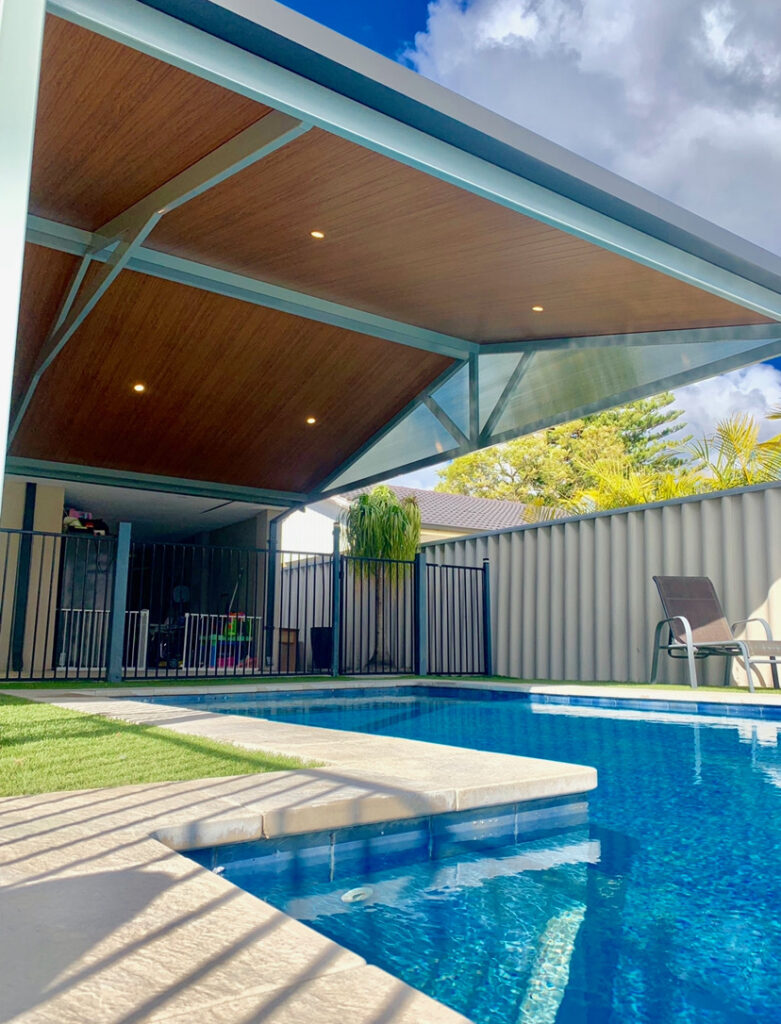
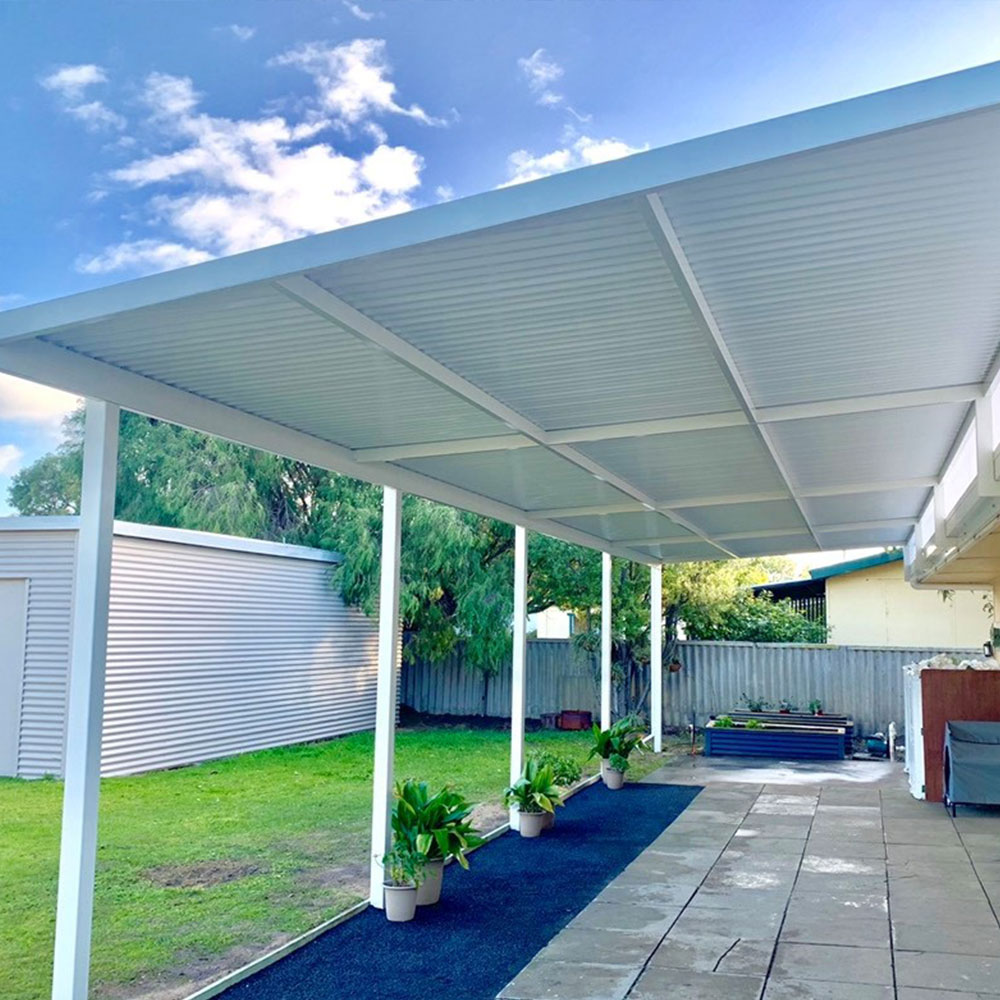
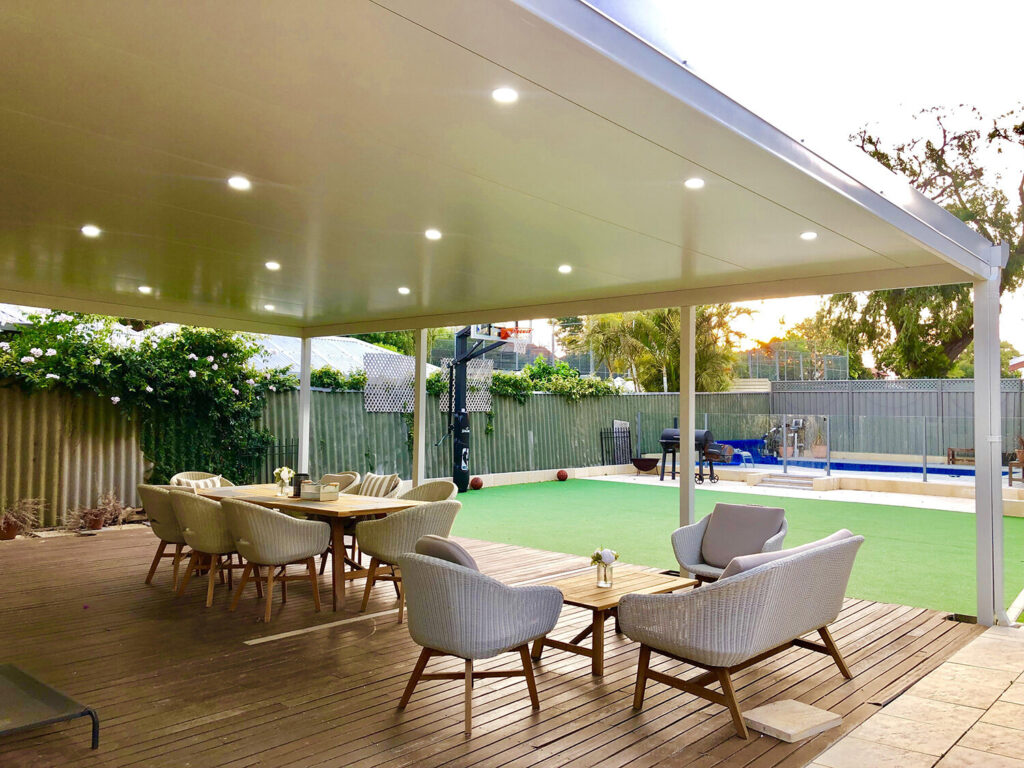

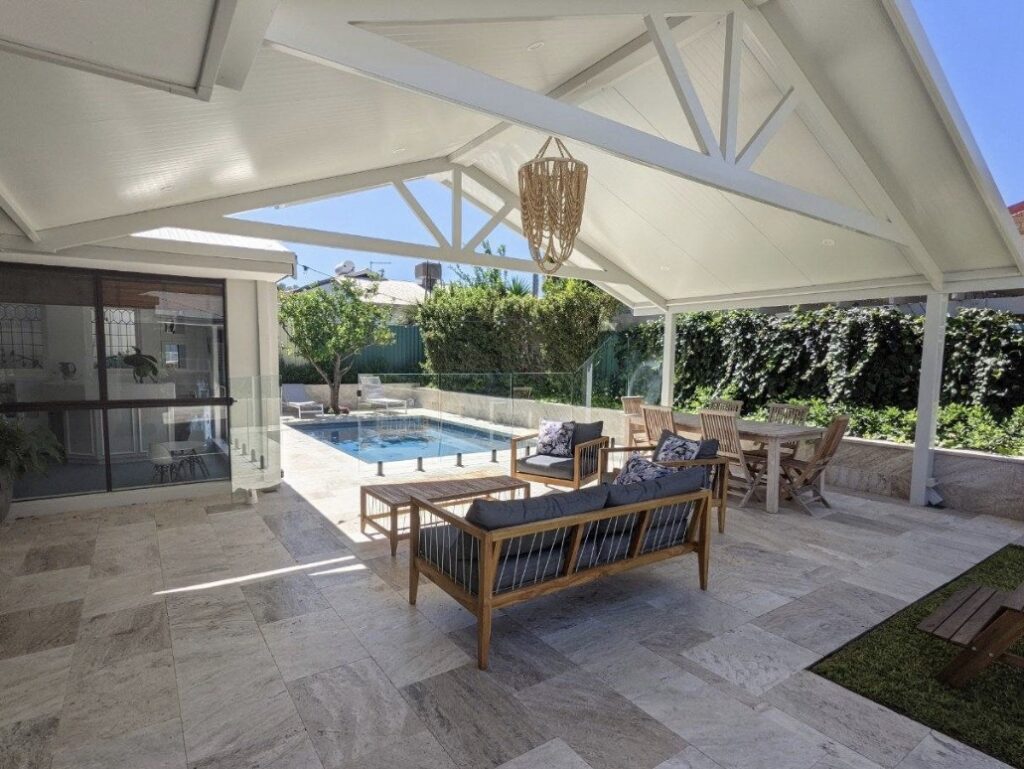
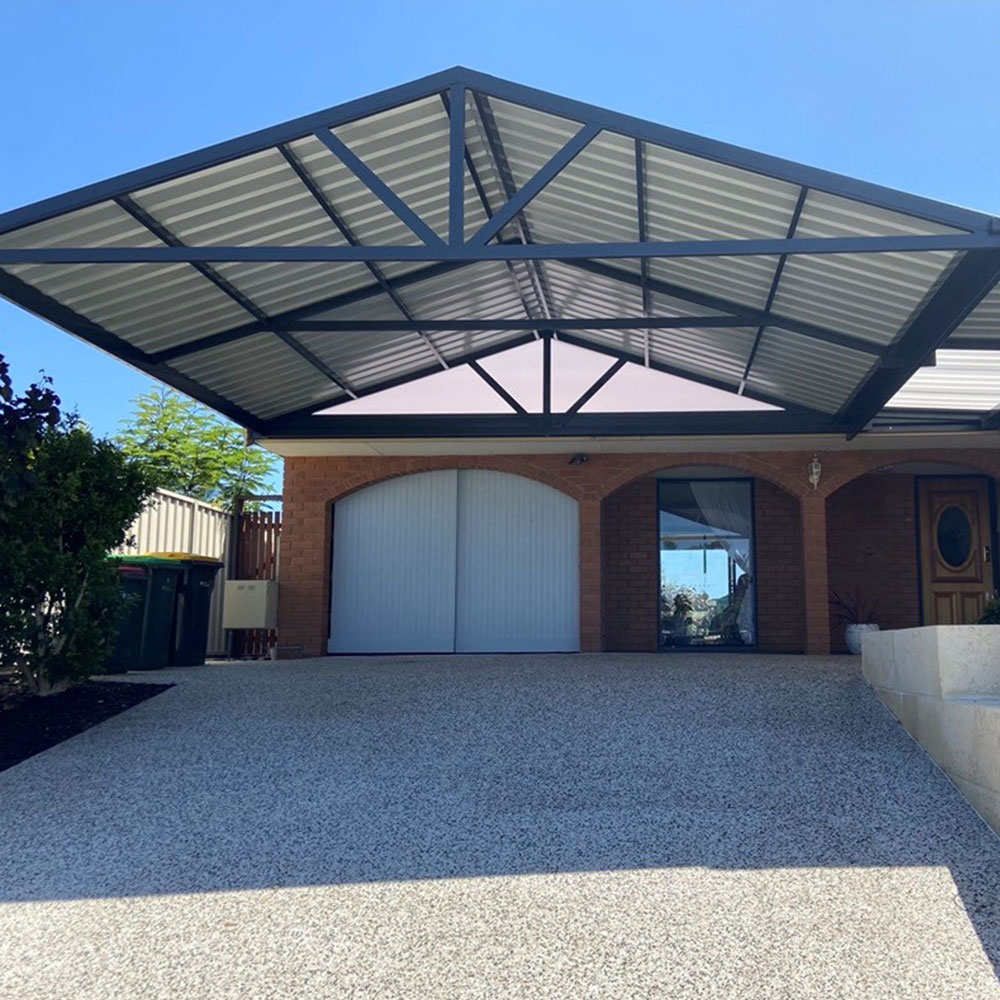
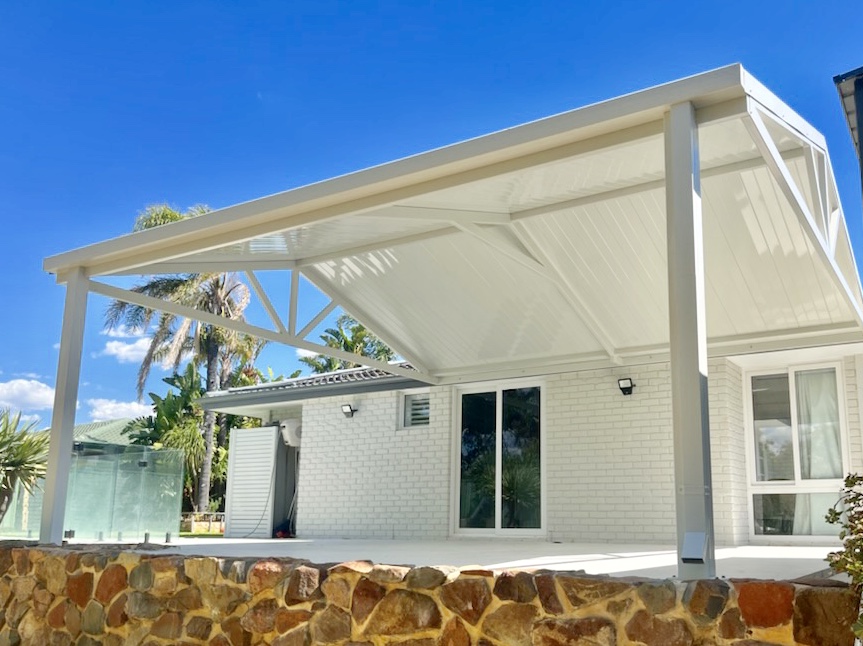
Main differences between pergolas and patios
Pergolas are often wooden structures with partial coverage from the sun and outdoor elements. Their roofs can offer rain protection but are usually less effective than patio roofs. Many people use pergolas as small private spaces in their yards that are intertwined with their gardens. They usually do not have guttering. Hanging plants and lights are also common for pergolas to add visual appeal. While they are a part of the property and may increase property value, they are typically not directly attached to the home itself.
Patios are often attached to a home by at least one wall. The ground is often paved, and unlike pergolas, patios are often seen as being as important to the home as its other interior rooms. These spaces are usually much more habitable, including furniture and gutter systems. They sometimes are also customized with outdoor kitchens, cooling systems, and more. Patios are also usually less involved with hanging vines and outdoor plants and can range from very simple top very extreme.
Which option is right for you?
Pergolas focus on aesthetics and garden integration, while patios provide a more functional outdoor living space and add to the home. Depending on how you want to use your outdoor space, either option could be right for you.
Get in touch with the JB Patios team to discuss the best option for your backyard.

